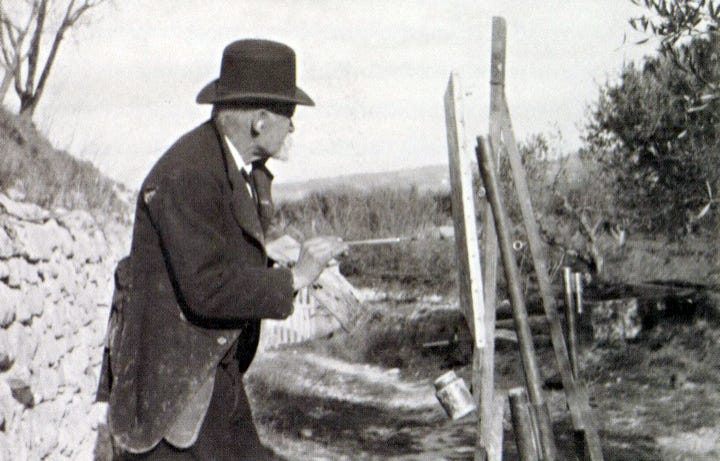Cézanne on the artistic temperament
“With only a little temperament, one can be a lot of painter.”
Welcome to the latest issue of Subtle Maneuvers. Previously: Advice on insomnia.
Paul Cézanne (1839–1906)
The opening yesterday of the exhibition Cézanne Drawing at MoMA seemed like a good excuse to look into the legendary French artist’s creative process. So, last week, I spent some time with Alex Danchev’s 2012 biography, Cézanne: A Life, to see what I could find out. In particular, I was looking for information on Cézanne’s concept of réalisation, which I first read about in a 1988 interview with the English painter Bridget Riley (found in this book). Talking about her own process, Riley said:
In making the paintings I proceed step by step, and test the ground before I make a move. . . . In a daydream way I have a sort of hunger about what I am going to do, or rather about the sensation I want the painting to precipitate or convey. It’s actually bringing this sensation into existence that is the difficulty; what Cézanne called ‘realization’.
In his biography, Danchev never really defines réalisation, but you get a strong sense of it nonetheless. For Cézanne, it didn’t just mean that a given work “succeeded,” exactly; it was more elusive than that. It involved a union of subject matter and the artist’s unique perception of that subject matter. As Riley said, it was about bringing a specific sensation into existence for the viewer. And, for Cézanne, it was tied up with the idea of temperament. Danchev writes:




